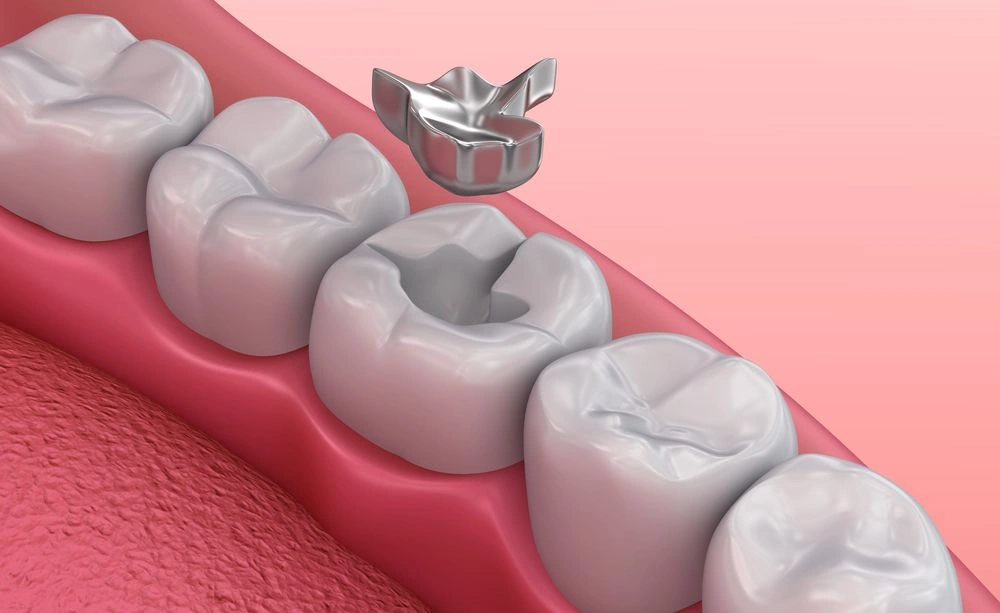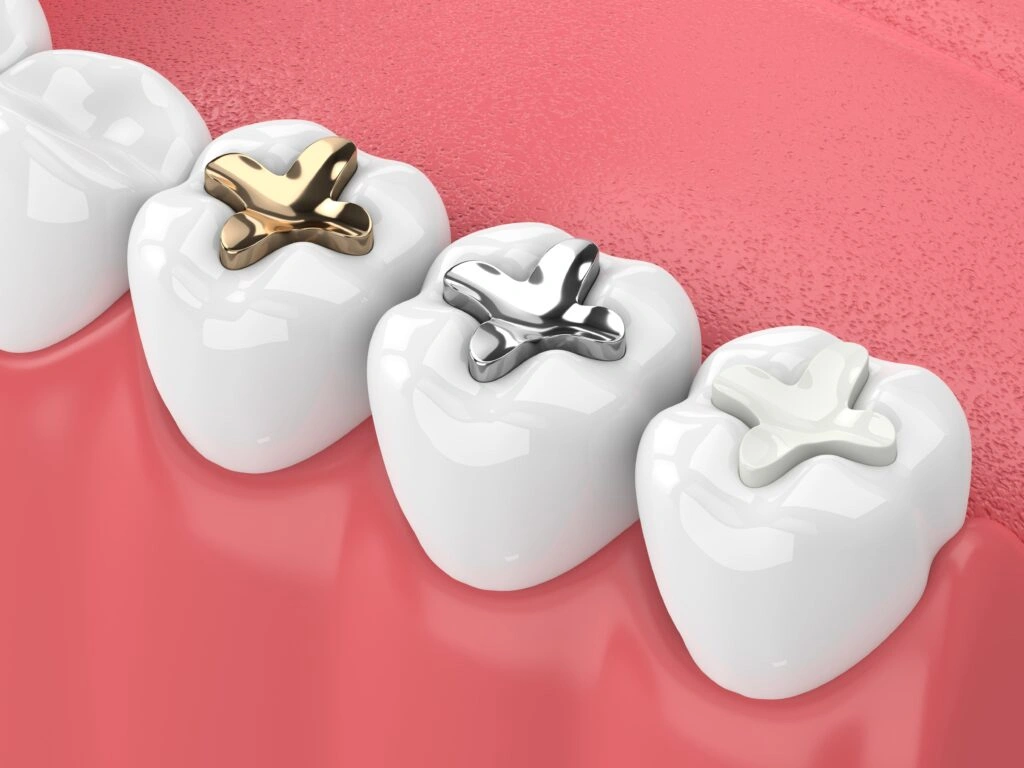Covering your dental filling cost with insurance can be a lifesaver and the right solution when you have tooth decay. And you’re not alone; 9 out of 10 Americans have issues with cavities and decay.
A dental filling is a restorative procedure used to repair a tooth and cover a cavity that has developed there. If you are looking to have the procedure soon, then you need to know what a dental filling cost with insurance. This will help you with making good decisions as regards your oral health while minimizing your out-of-pocket costs.
This article will cover the various factors that affect the cost of a dental filling and how having dental insurance helps reduce these costs.
What are the Steps Taken in a Dental Filling Procedure?
Once you have decided, in conjunction with your restorative dentist, to have a dental filling, you can expect to have the procedure done in five distinct steps:

1. Preparation for the Procedure
Here, your dentist or an assistant will begin preparing for the procedure by whitening your teeth. This is so that your dentist will be able to properly match the color of the bonding resin to that of your teeth.
After, clear dental Mylar strips will be placed between the tooth to be filled and the adjacent teeth. This will keep the filling resin away from the neighboring teeth. Your dentist will then numb the areas around the tooth by applying a topical anesthetic.
Next, a local anesthetic will be injected into the affected tooth or teeth. Your dental filling procedure will be pain-free if both are done properly.
2. Site Preparation for Filling
After anesthetizing the tooth to be filled and its surrounding areas, your dentist will proceed to remove the bacteria (plaque), the decayed portion of the tooth, and any debris. This is done using a dental handpiece and a small, high-speed dental drill called a bur. In this way, clear space is created for the filling material.
3. Cleaning and Shaping of the Cavity
Once the decayed part of your affected tooth has been removed, your dentist will go ahead to prepare the cavity by sterilizing it and shaping it into a functional shape.
An acid gel, to etch your tooth’s surface, might be applied to the cavity if a composite filling is going to be used for your filling. The acid gel ensures that the composite filling material bonds properly to the surface of your tooth.
4. Filling of the Cavity
At this stage, your dentist will proceed to fill in your cavity using the material that has been decided on before the consultation. Note that the filling material will be placed in the cavity one layer after the other, and each layer will be treated with a special bonding light to properly harden the bonding material.
5. Shaping and polishing of the Cavity
After the cavity in your tooth has been filled, your dentist will proceed to drill the filling into a shape that follows the curves of the natural contour of the tooth. Next, your dentist will polish the filling so its surface can be smooth.
After the procedure, you will experience some discomfort and maybe even some sensitivity in the filled tooth. This is normal and would go away within a few days. The following tips will help with the discomfort and sensitivity:
- Don’t eat or drink anything hot or cold in the initial 24 hours following your procedure
- Eat only semi-solid or entirely liquid foods until the filled tooth has healed fully
- Get to your dentist immediately if you experience any persistent pain or discomfort in your filled tooth
Overall, the procedure is simple and can be done in at most two hours, depending on the number of teeth being filled and how involved the process of filling each tooth is.
Read also: How Long Does Numbness Last After Dental Filling?
Factors Affecting the Cost of a Dental Filling
When considering dental filling cost with insurance, it’s important to note that some major factors affect the final bill of your proposed filling. They include the type of filling material that will be used, the location and size of the cavity being filled, the expertise of your restorative dentist, and the existence or otherwise of your dental insurance.
1. The Type of Filling Material That Will Be Used

Your dentist will use one out of four available filling material types: amalgam or silver, composite, gold, or ceramic. Each of these types of filling materials has differing costs. Amalgam fillings are the least costly of the four and will cost between US$100 and US$250 per tooth. Composite fillings, on the other hand, cost between US$150 and US$450 each.
2. The Location and Size of the Cavity Being Filled
If the cavity being filled is large, it will naturally consume more filling material. Also, if the filling is going to be done on one of your incisors, you can expect that your bill will be higher. This is because of the detail that will go into getting the filling in your incisors to closely match the color and shade of the rest of your teeth.
3. The Expertise of Your Restorative Dentist
The expertise of your restorative dentist also weighs in on your final bill. Generally, if your dentist has above-average expertise and his or her practice is in a metropolitan area, you should expect to pay more compared to what you would pay at a practice located in a rural area.
4. The Existence or Otherwise of Your Dental Insurance
If you have a thoughtfully placed dental insurance plan in place, then you can expect to pay less for your dental filling. Ideally, your dental insurance will cover a major portion of the cost of having the dental filling done, and so reduce or eliminate the need to pay anything out-of-pocket.
Read also: Pros and Cons of Having Two Dental Insurance
How Much Does a Dental Filling Cost With Insurance?

The answer to the question of a dental filling cost with insurance depends largely on how many surfaces are going to be filled in each tooth.
For example, if a large surface area is being filled, it will cost more compared to just a spot on the same tooth. And as mentioned earlier, dental insurance will greatly lower the cost of your proposed dental filling.
- Amalgam fillings: An amalgam filling will cost you between US$100 and US$250 without insurance. With insurance, you can expect to pay as little as US$11.50 to US$75 out-of-pocket. Amalgam fillings are a mixture of metals (mainly silver) and are cheap to have. However, their color will not match the natural color of your teeth, so they will be easily noticed. They last for as long as ten years.
- Composite fillings: Composite fillings are very common. Many patients opt for them because they are made from resins whose color closely matches that of the natural. human teeth. Composite fillings cost between US$150 and US$450 each without insurance. With dental insurance, you will pay between US$22.50 and US$122.50 out-of-pocket. Note that composite fillings are not as durable as their amalgam counterpart. Generally, you will need to replace yours every five years if you’ve opted for this filling.
- Gold fillings: Gold fillings are very expensive; they cost between US$250 and US$2,000 each without insurance. With insurance, you will be paying between US$62.50 and US$500 for each gold filling. Gold fillings are extremely durable and are confirmed to last for several decades. They are a rare choice of filling material for a dental filling.
- Ceramic fillings: Ceramic fillings can be as expensive as gold fillings. For example, each ceramic filling costs between US$300 and US$4,500 without insurance. With dental insurance, you can expect to pay between US$75 and US$1,125 out-of-pocket. Ceramic fillings are another common choice for a dental filling material. They are durable, and their colors closely match those of human teeth.
There are incidental costs to factor in, such as the cost of the complete oral exam your dentist will do to assess your situation and the cost of any X-rays of your jaw or teeth that will be done. Finally, local anesthetic is a cost you should factor into your consideration.
Read also: How Much is a Dental Filling Without Insurance?
Conclusion
Dental fillings are a very common and painless way to keep your oral health at its optimum. The key tip to getting the best outcomes is to consult widely—with your spouse, your dentist, and your insurer—as you make decisions about where to have the procedure, what filling material to use, and with which restorative dentist.
Whether you need financial help or not, it’s advisable to use insurance where you can. The dental filling cost with insurance makes the procedure less costly and convenient.







